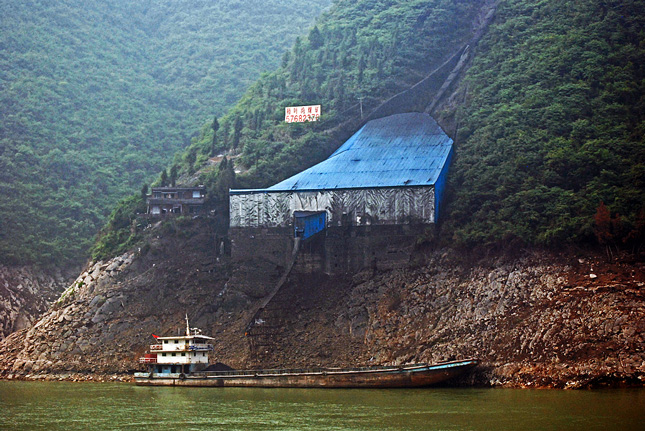-
Report: China Could Generate 80 Percent of Its Energy From Renewables By 2050 For Less Than Cost of Coal
March 26, 2014 By Xiupei Liang
The idea that China, the world’s largest producer of greenhouse gas emissions, could generate a significant portion of its energy from renewable sources might seem like a distant dream, but according to a new report, it’s not so far off. [Video Below]
China’s Future Generation, launched at the Wilson Center on February 19 and produced by the World Wildlife Fund and Energy Transition Research Institute, forecasts that China could reach 80 percent renewable electricity by 2050 at far less cost than continuing to rely on coal, which currently accounts for 70 percent of power generation.
A Renewable Future?
In the report, lead author William Chandler and his team estimate China’s electricity supply and demand on an hour-by-hour basis through 2050 using a model specially developed for assessing the effects of different power choices. The “China 8760 Grid Model,” as it’s called, projects results under four scenarios: baseline, high efficiency, high renewables, and low carbon mix.
The baseline assumes no new clean energy or efficiency and no major structural economic reforms that shift China toward a larger service sector. In contrast, the high efficiency scenario assumes that China successfully implements very aggressive energy efficiency requirements and makes a substantial shift away from energy-intensive manufacturing as the basis for economic growth. Building on the high efficiency scenario, the high renewable scenario further assumes that China will meet its electricity demand with renewable sources alone, while the low-carbon mix scenario assumes that China meets its energy demand with renewable plus various “low-carbon” sources, including nuclear and natural gas (nuclear power is not included in the previous three scenarios).
Chandler and his team conclude with two key findings: that energy efficiency is the fundamental driver for any low carbon future, and that it is possible for China to meet 80 percent of its projected electric power needs in 2050 with domestically available renewable resources.
But these goals are only possible with policy changes. China must incorporate every known or anticipated efficiency technology, said Chandler, and improve grid balancing technologies, like smart grids. In addition, “a carbon standard for power generation is essential, because renewables become, in our scenarios, cheaper than the other options by 2035, but unless China starts penetrating the market in 2020 or 2025, China will not make it…and China will get much higher carbon emissions.”
“A Work in Progress”
Wenqian Tang, executive vice secretary-general of the Chinese Renewable Energy Industries Association, emphasized the obstacles facing China’s current power sector. She pointed out, based on current publicly available data, that the capacity factors for wind and solar power generation are lower than the assumptions used in the model. She also noted that actual implementation of renewable energy in China has been slow recently – since 2010, non-fossil fuel use as a share of total energy consumption has only climbed from 8.0 percent to 9.8 percent.
“China is standing at a crossroads for energy transition”However, Tang said she believes the development of renewable energy would get back on track, if the government issues concrete measures to implement all the energy conservation and renewable goals already on paper.
China’s investment in clean energy is critical globally as well as domestically, said Ethan Zindler, global head of policy analysis at Bloomberg New Energy Finance. Its ability to scale-up manufacturing could help bring down prices for renewable energy technologies everywhere.
China is already making an impact in terms of investing in non-thermal sources, experimenting with an “everything but the kitchen sink” approach at national, provincial, and local levels, he said. Zindler credited China for efforts to reduce thermal generation and stimulate development of photovoltaics. However, he stressed that financing would be a major obstacle in further promotion of distributed solar generation.
Zindler concluded that in the short-term, China’s clean energy incentives are making significant differences, such as the adoption of a feed-in tariff for solar photovoltaics last year. However, in the long-term, “it’s all a work in progress.”
Paying for Coal
One argument for more renewables that the Chinese government has already responded to is air pollution. Citizen outrage over catastrophic air pollution last year prompted the government to consider launching a nationwide cap on coal, said Lunyan Lu, director of the climate and energy program at WWF China.
The government has already set up local coal consumption targets through 2015 for three of the most heavily polluted regions – the Beijing-Tianjing-Hebei Region, Pearl River Delta, and Yangtze River Delta – and the Chinese National Energy Administration introduced a pilot scheme for 81 “clean energy” cities and eight industrial parks. (Though the proportion of renewable energy used in this cities is very low at present.)
Though coal burning has been critical to China’s meteoric economic rise, it is also perhaps the single largest contributor to pollution levels that are becoming unbearable. The report points to the potential of a much greener future for China’s power sector, but considerable obstacles remain.
“China is standing at a crossroads for energy transition,” said Lu. “China must face the issue.”
Event Resources:
- ‘China’s Future Generation: Assessing the Potential for Maximum Renewable Power Sources in China to 2050’
- Lunyan Lu’s Presentation
- Wenqian Tang’s Presentation
- Photo Gallery
- Video
Sources: Bloomberg News, Energy Transition Research Institute, Reuters, U.S. Energy Information Administration, WWF, The Wall Street Journal.
Photo Credit: A coal barge is loaded in the Wu Gorge, China, courtesy of flickr user Harvey Barrison.
Topics: Asia, China, China Environment Forum, coal, development, economics, energy, environment, environmental health, featured, natural gas, video
 A Publication of the Stimson Center.
A Publication of the Stimson Center.



